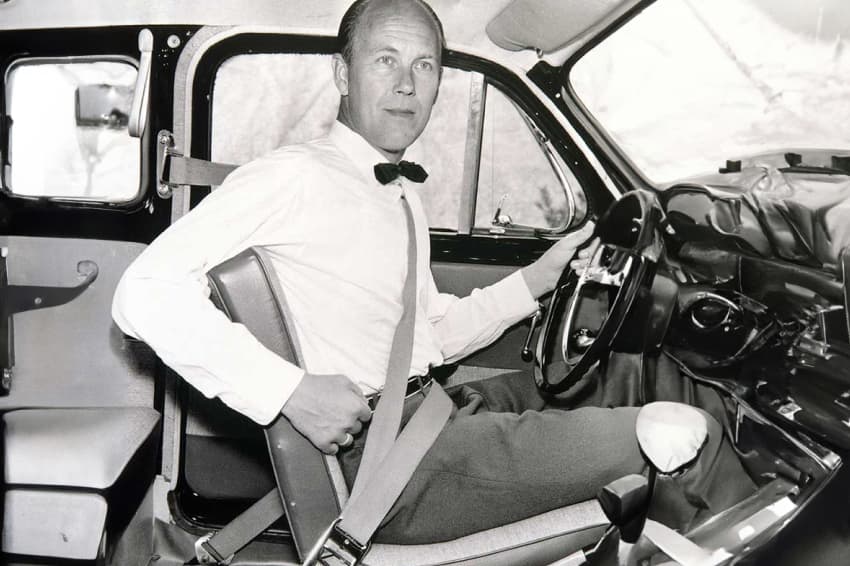ON THIS DAY: 10 July 1962 – Swedish engineer Nils Bohlin was granted U.S. Patent No. 3,043,625 for the three-point seat belt, a life-saving invention that would go on to revolutionise automotive safety. It’s estimated that Bohlin’s design has reduced the risk of death in car crashes by 45%—a remarkable impact for such a simple yet ingenious device.
Born in Härnösand, Sweden, in 1920, Bohlin began his career designing ejection seats for pilots at the Swedish aircraft manufacturer Saab. In 1958, he joined Volvo as a safety engineer, where he set out to improve vehicle safety for everyday drivers.
Before Bohlin’s innovation, seat belts consisted of a single strap across the stomach. These early designs offered minimal protection, particularly in high-speed collisions, and were often uncomfortable to wear. In 1959, Bohlin introduced the three-point safety belt—a design that combined a lap belt and shoulder harness anchored at a single point near the hip. It was easy to use with one hand, comfortable to wear, and most importantly, effective in distributing crash forces across the chest, pelvis, and shoulders, significantly reducing internal injuries.
Bohlin once explained that his seatbelt ‘effectively, and in a physiologically favourable manner, prevents the body of the trapped person from being thrown forward.’ Today, every new car is equipped with this life-saving design.
The first jurisdiction to mandate seat belt use was Victoria, Australia. Other high-income countries soon followed: Sweden in 1975, Germany in 1976, Canada between 1976–77, the UK in 1984, and the U.S. in 1995. In 2006, the European Union enacted a directive requiring all car passengers to wear seat belts across all member states.
Bohlin died in 2002, aged 82. Though he never became personally wealthy from his invention, he received wide recognition, including a Gold Medal from the Royal Swedish Academy of Engineering Sciences. He is now credited with creating one of the most important safety inventions of the modern age.

